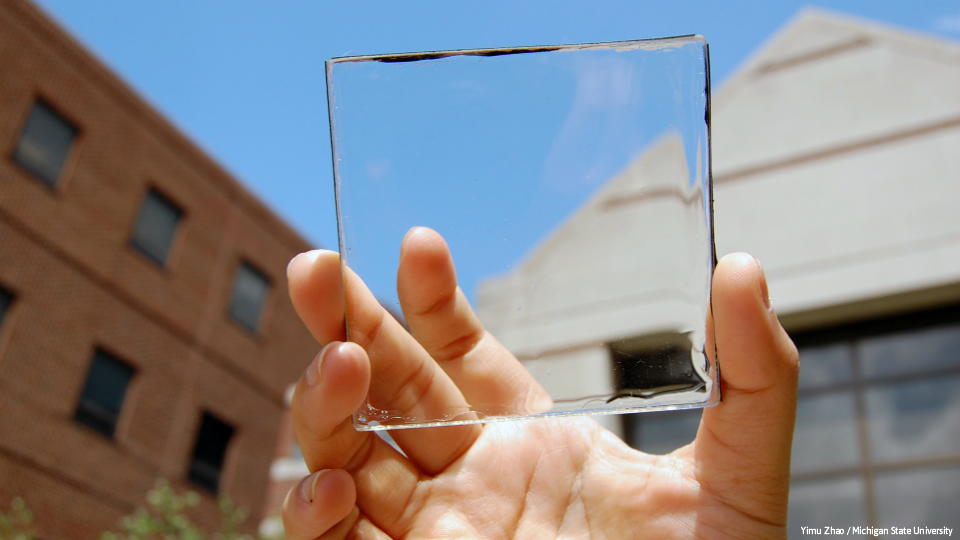ADVERTISEMENT
Filtered By: Scitech
SciTech
These transparent solar panels turn your windows into power generators

Soon, we may see solar panels at work without having to see the panels themselves.
Researchers at Michigan State University have developed a new transparent "solar concentrator" that can be placed over a window to create solar energy.
Even better, the new technology could later on be applied to buildings, cell phones and any device with a clear surface, the university said.
“No one wants to sit behind colored glass. It makes for a very colorful environment, like working in a disco. We take an approach where we actually make the luminescent active layer itself transparent,” said Richard Lunt of MSU’s College of Engineering.
“It opens a lot of area to deploy solar energy in a non-intrusive way. It can be used on tall buildings with lots of windows or any kind of mobile device that demands high aesthetic quality like a phone or e-reader. Ultimately we want to make solar harvesting surfaces that you do not even know are there,” he added.
Lunt is an assistant professor of chemical engineering and materials science.
How it works
Lunt and his team developed a solar harvesting system that uses small organic molecules to absorb specific "nonvisible" wavelengths of sunlight such as ultraviolet and infrared.
Infrared light is guided to the edge of the plastic, where thin strips of photovoltaic solar cells convert it to electricity.
“Because the materials do not absorb or emit light in the visible spectrum, they look exceptionally transparent to the human eye,” Lunt said.
Other members of the research team include Yimu Zhao, an MSU doctoral student in chemical engineering and materials science; Benjamin Levine, assistant professor of chemistry; and Garrett Meek, doctoral student in chemistry.
Non-intrusive
The university said one advantage of the new technology is flexibility, as it can be potentially scaled to commercial or industrial applications.
But Lunt said more work is needed to improve the panel's efficiency.
For now, the panel can produce a conversion efficiency close to one percent. They are aiming for five percent. — Joel Locsin/TJD, GMA News
More Videos
Most Popular




